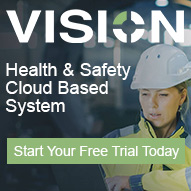Anyone who works for the employer needs to know how to work safely and without risks to health. The employer must provide clear instructions and information, and adequate training, for employees.
As an employer this can seem to be an insurmountable task, however, the law does permit a proportionate* approach, for example a low-risk business would not need lengthy technical training. Providing simple information or instructions is likely to be sufficient.
*There are a number of Acts of Parliament and Supporting Regulations that specify the minimum standard of formal training required to be compliant, in these circumstances the proportionate approach would be negated if used to defend noncompliance.
If you have contractors and self-employed people working for you, the responsibility lies with you to make sure everyone has the right level of information on:
- hazards and risks they may face, if any
- measures in place to deal with those hazards and risks, if necessary
- how to follow any emergency procedures
Some employees may have particular training needs, for example:
- new recruits need basic induction training in how to work safely, including arrangements for first aid, fire and evacuation
- people changing jobs or taking on extra responsibilities need to know about any new health and safety implications
- young employees are particularly vulnerable to accidents and you need to pay particular attention to their needs, so their training should be a priority. It is also important that new, inexperienced or young employees are adequately supervised
- employee representatives or safety representatives will require training that reflects their responsibilities
- some people’s skills may need updating by refresher training
The employers’ risk assessment should identify any further training needs associated with specific risks. If danger areas are identified in the workplace, the employer must ensure that employees receive adequate instruction and training on precautions they must take before entering them.
The employer must think about any legal requirements for specific job training, e.g. for operating forklift trucks. Remember that if new equipment, technology or changes to working practices/systems is introduced, , employees will need to know about any new health and safety implications.
Remember, employees also have responsibilities under health and safety law to:
- take care of their own health and safety and that of others
- co-operate with employers to help comply with health and safety legislation
- follow any instructions or health and safety training you provide
- tell employers about any work situations that present a serious and imminent risk
- let employers know about any other failings they identify in the health and safety arrangements











